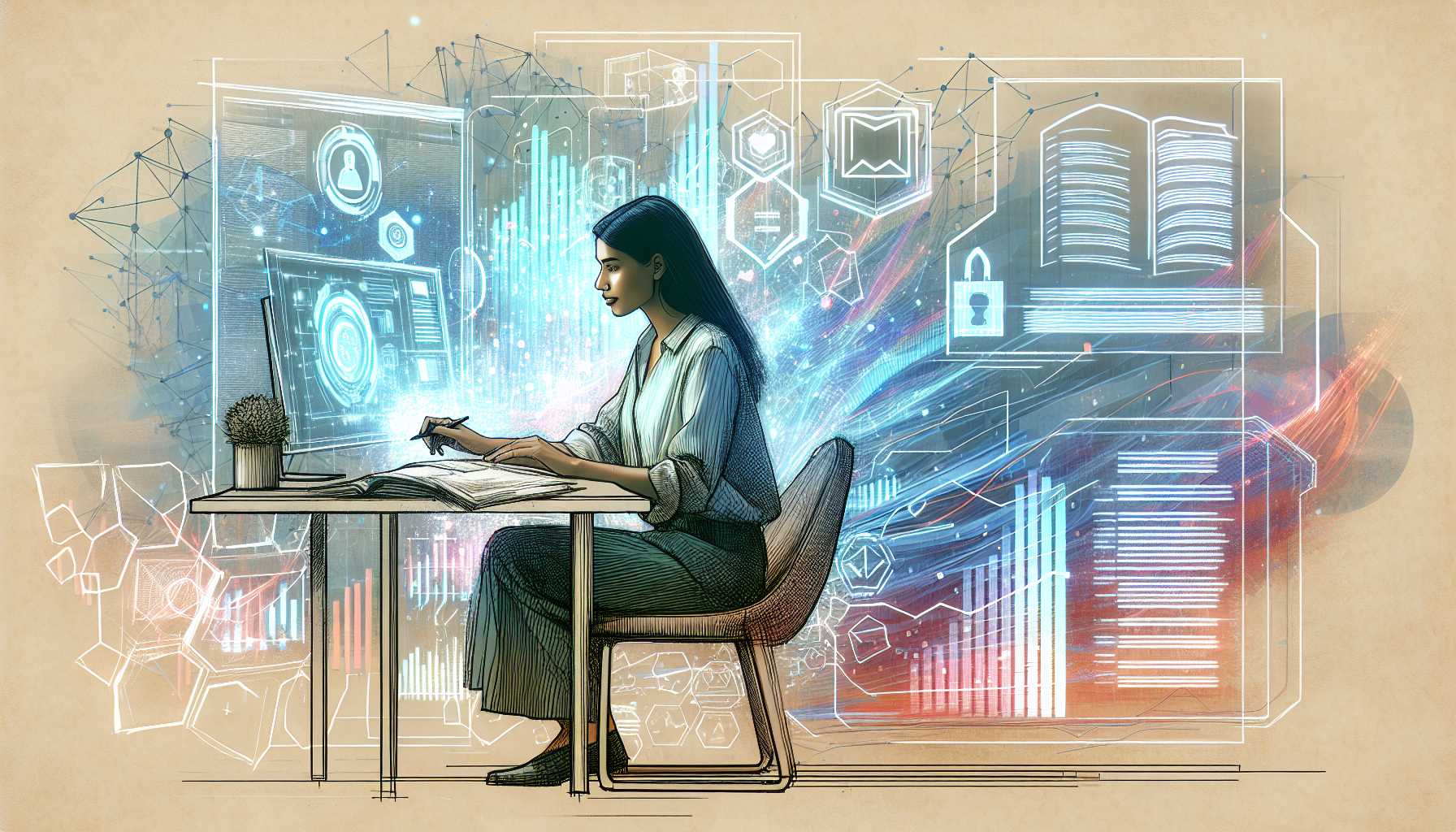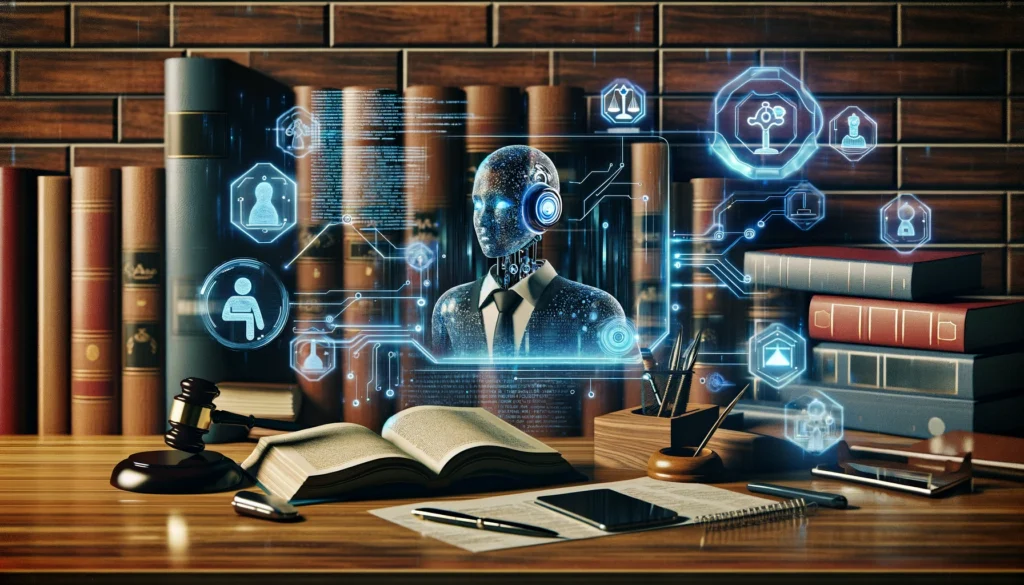
Opening the Vault: Introduction to AI in Legal Drafting
The legal profession is witnessing a paradigm shift with the advent of Artificial Intelligence (AI) technologies. Among these innovations, ChatGPT and similar AI tools are revolutionizing how legal documents, such as Powers of Attorney for Healthcare, are drafted. As the legal landscape evolves, paralegals are uniquely positioned to leverage these AI tools, elevating their efficiency and accuracy in document preparation. This article explores the integration of AI in healthcare power of attorney drafting, offering insights and practical guidance for paralegals.
We will begin by understanding the fundamental aspects of Durable Powers of Attorney for Healthcare, followed by demonstrating how to effectively incorporate AI. By the end, paralegals will be equipped with actionable strategies to harness AI for precise legal drafting.
Understanding Durable Power of Attorney for Healthcare: Foundation First
Before delving into AI integration, it is essential to comprehend what a Durable Power of Attorney for Healthcare entails. This legal document empowers an appointed agent to make healthcare decisions on behalf of the principal, should they become incapacitated. The core elements include:
- Identification of the principal and agent
- Specific powers granted to the agent
- Conditions under which the document becomes effective
Traditional drafting methods often present challenges such as human error, inconsistent language, and time-consuming processes. By combining legal expertise with AI, these obstacles can be significantly mitigated.
With a solid understanding of the document’s fundamentals, we now explore how AI can complement legal expertise efficiently.
Also read:
Building the Bridge: Integrating AI with Legal Expertise
Integrating AI with legal expertise creates a harmonious balance where AI handles repetitive tasks, while human oversight ensures legal integrity. AI tools like ChatGPT can assist by generating initial drafts, but it is crucial to set realistic expectations. AI should be viewed as an augmentative tool rather than a replacement for human expertise.
Setting clear boundaries and understanding AI’s role lays the foundation for the next step: crafting effective prompts.
Also read:
Crafting Precision Prompts: Getting the Most Out of ChatGPT
Maximizing the potential of ChatGPT relies heavily on the quality of prompts. Effective prompt creation involves clarity, specificity, and iteration. Here are some principles and examples:
- Be Specific: Clearly define the document type and details.
- Context Establishment: Provide context for accurate content generation.
- Iterative Refinement: Continuously refine prompts based on initial outputs.
Example of a Basic Prompt:
“Draft a Durable Power of Attorney for Healthcare.”
Example of an Advanced Prompt:
“Draft a Durable Power of Attorney for Healthcare for John Doe. Appoint Jane Smith as the agent. Include specific powers for making healthcare decisions, including surgical procedures and end-of-life care. The document should activate upon the principal’s incapacity as validated by two physicians.”
Refining and iterating prompts for better results ensures the AI-generated content meets precise requirements. Now, let’s explore how to build and customize reusable templates effectively using ChatGPT.
Also read:
Template Magic: Creating Reusable Frameworks
Templates are invaluable for streamlining repetitive tasks. ChatGPT can assist in building and customizing templates tailored to specific legal needs. Here’s how:
- Identify Key Components: Categorize the document into standard sections such as introductions, clauses, and signatures.
- Create Base Template: Develop a foundational structure.
- Customize for Specific Cases: Adjust clauses and terminology for individual cases.
Example:
“Create a base template for a Durable Power of Attorney for Healthcare that includes sections for principal identification, agent appointment, specific healthcare powers, and activation conditions.”
Once the base template is established, it can be customized for each client’s unique situation, ensuring compliance and accuracy while saving time. ChatGPT excels in automating these repetitive tasks, allowing paralegals to focus on more complex legal nuances.
Fine-tuning language and tone is the next critical step to ensure professionalism and consistency in legal documents.
Also read:
Mastering Nuance: Fine-Tuning Language and Tone
Legal documents must maintain a formal tone and precise language. Adjusting formality and phrasing based on context is crucial. ChatGPT can be guided to achieve this by specifying the required tone and level of formality:
Example:
“Formulate the document with a formal tone suitable for legal contexts, ensuring clarity and professional language.”
Reviewing and editing AI-generated content ensures that it aligns with professional standards. Consistency across documents can also be maintained by using predefined language patterns within templates.
Next, we’ll discuss methods for validating AI-generated content to ensure accuracy and completeness.
Also read:
Quality Control: Ensuring Accuracy and Completeness
Ensuring the accuracy and completeness of AI-generated content is paramount. Effective quality control involves multiple layers of review:
- Initial Human Review: Paralegals should review the AI-generated drafts, checking for legal accuracy and thoroughness.
- Cross-Referencing Tools: Utilize additional legal databases and tools to verify content.
- Error-Checking Practices: Implement systematic error-checking methods, such as checklists and peer reviews.
Incorporating human oversight in the AI workflow ensures that the final document adheres to legal standards and client expectations. Next, we explore additional AI capabilities that can further enhance efficiency.
Efficiency Tools: Leveraging Additional AI Capabilities
Beyond drafting, AI tools can assist paralegals in various aspects of their work:
- Data Management: AI can organize and manage client data efficiently.
- Legal Research: Advanced tools can expedite the research process by quickly identifying relevant legal precedents.
- Client Interactions: Chatbots can handle routine inquiries and FAQs, freeing up time for more complex tasks.
Leveraging these complementary AI tools maximizes efficiency and productivity. Ethical considerations, however, must always be front and center.
Also read:
Safeguarding Client Confidentiality: Ethical Considerations
The integration of AI into legal practices demands stringent measures to safeguard client confidentiality. Ensuring data privacy involves:
- Using secure, encrypted platforms for AI interactions
- Implementing strict access controls
- Regularly reviewing compliance with data protection regulations
Adhering to these best practices mitigates legal risks and upholds ethical standards. Finally, let’s glance at the future of AI in legal fields.
Future-Pacing: Preparing for AI Advancement in Legal Fields
Emerging trends indicate continuous innovation in AI applications for law. Paralegals should stay abreast of these trends, including advancements in:
- Enhanced AI-powered legal research tools
- More intuitive document automation systems
- Advanced predictive analytics for case outcomes
Continuous learning and adaptation are essential for paralegals to remain competitive and proficient in an AI-augmented legal landscape.
Summarizing the key takeaways, let’s revisit the benefits and practical applications of integrating AI tools.
Also read:
Closing Insights: Summarizing Key Takeaways
Incorporating AI tools like ChatGPT into the drafting of Durable Powers of Attorney for Healthcare offers numerous benefits. These include enhanced efficiency, improved accuracy, and the ability to maintain consistency across legal documents. By embracing AI, paralegals can streamline their workflow and focus on more complex and value-driven tasks, ensuring high-quality legal services.
Proactive adoption and continual learning in AI applications will position paralegals at the forefront of innovation in the legal profession.
Also read:
Additional Resources: Further Reading and Tools
For those interested in deepening their understanding and enhancing their skills in AI-assisted legal drafting, here are some valuable resources:


